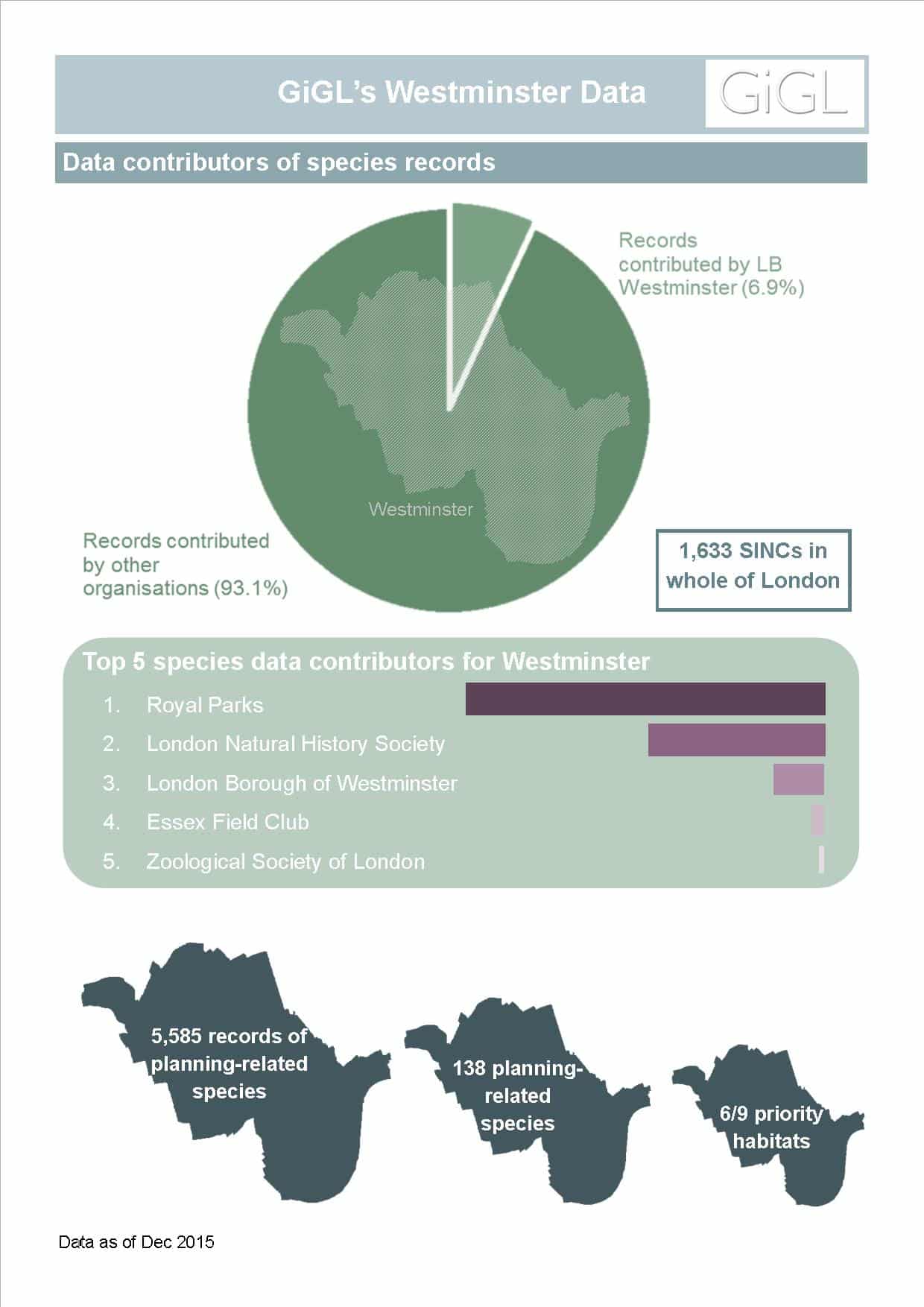Louise Sleeman, GiGL Information Officer

LB of Westminster
With a population of nearly nine million and growing, development and the number of planning applications in Greater London inevitably continues to rise. However, behind the scaffolding and bricks, numerous open spaces and green corridors still exist; providing biodiversity with much-needed refuges. Monitoring wildlife and the impact of development is of course vital in protecting that wildlife.
There are 56 habitats and 943 species considered to be of ‘material consideration in planning’, as listed in section 41 of the NERC (Natural Environment and Rural Communities) Act, 2006. These habitats and species provide the focus for monitoring of planning applications.
Having produced numerous reports for screening planning proposals over the last 20 years, and holding a vast resource of habitat and species data, GiGL is in a unique position to analyse how well boroughs are meeting their biodiversity screening duties. With this in mind, and hoping we can assist them in improving the efficiency of this process, we have started the “planning project”.
The first stage of assessing how local authorities are currently managing their screening process, is to analyse current environmental and planning data for each borough. This includes looking at the number of records of species listed in the NERC Act; an audit of GiGL’s planning related services; an assessment of the number of actual planning applications that have been submitted; as well as other useful analytics. This is the stage where we are currently.
We will be providing boroughs with a report that overviews the environment data for their area and shows how this relates to their planning work. These reports should provide boroughs with a useful method of reviewing their performance in screening applications with regards to wildlife protection.
Back in 2010 GiGL’s then Planning Officer, Aldo Tanca, in partnership with Natural England, developed a valuable automated tool for screening planning applications for biodiversity interests. The tool uses GiGL data and best practice guidelines from ALGE (Association of Local Government Ecologists) to provide relevant evidence and advice for each application. This aids local authorities under pressure to speed up the screening process without compromising on quality. GiGL would like to develop this work and elaborate on its goals with this new project.
We hope to develop a steering group of planners to discuss what needs to be done with the findings. Future outputs of the project will hopefully include: the creation of resources that would best inform local authorities of what to do at various stages of the biodiversity screening process; the creation of a map to show potential development areas that may be used for tasks such as offsetting where relevant; as well as further awareness raising of the planning tool.
The importance of screening planning applications for biodiversity is demonstrated by the successful conviction of developers who disturbed a bat roost, outlined by DC Sarah Bailey.
We are confident that this project will greatly help our partners to prioritise the environment and community within the planning system.
Louise Sleeman is GiGL’s newest member of staff, having joined us over the summer from The Mammal Society where she helped create the South East Mammal Atlas.
